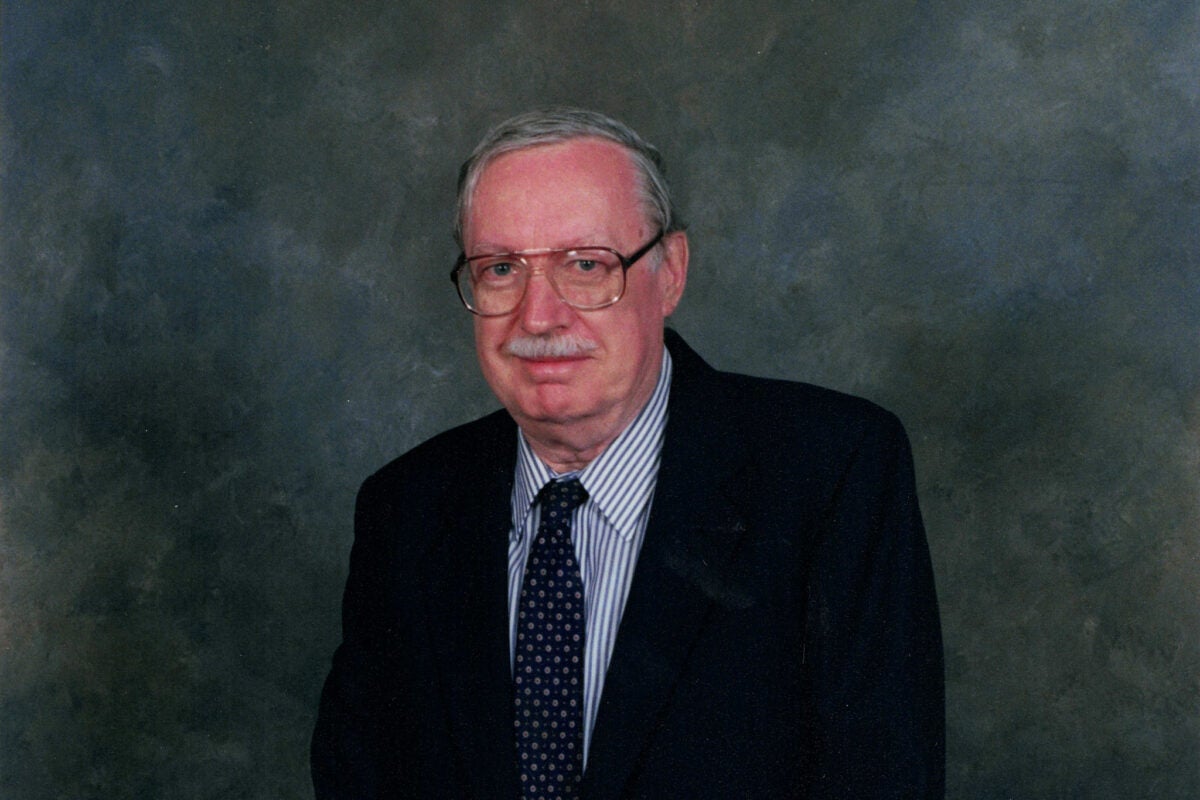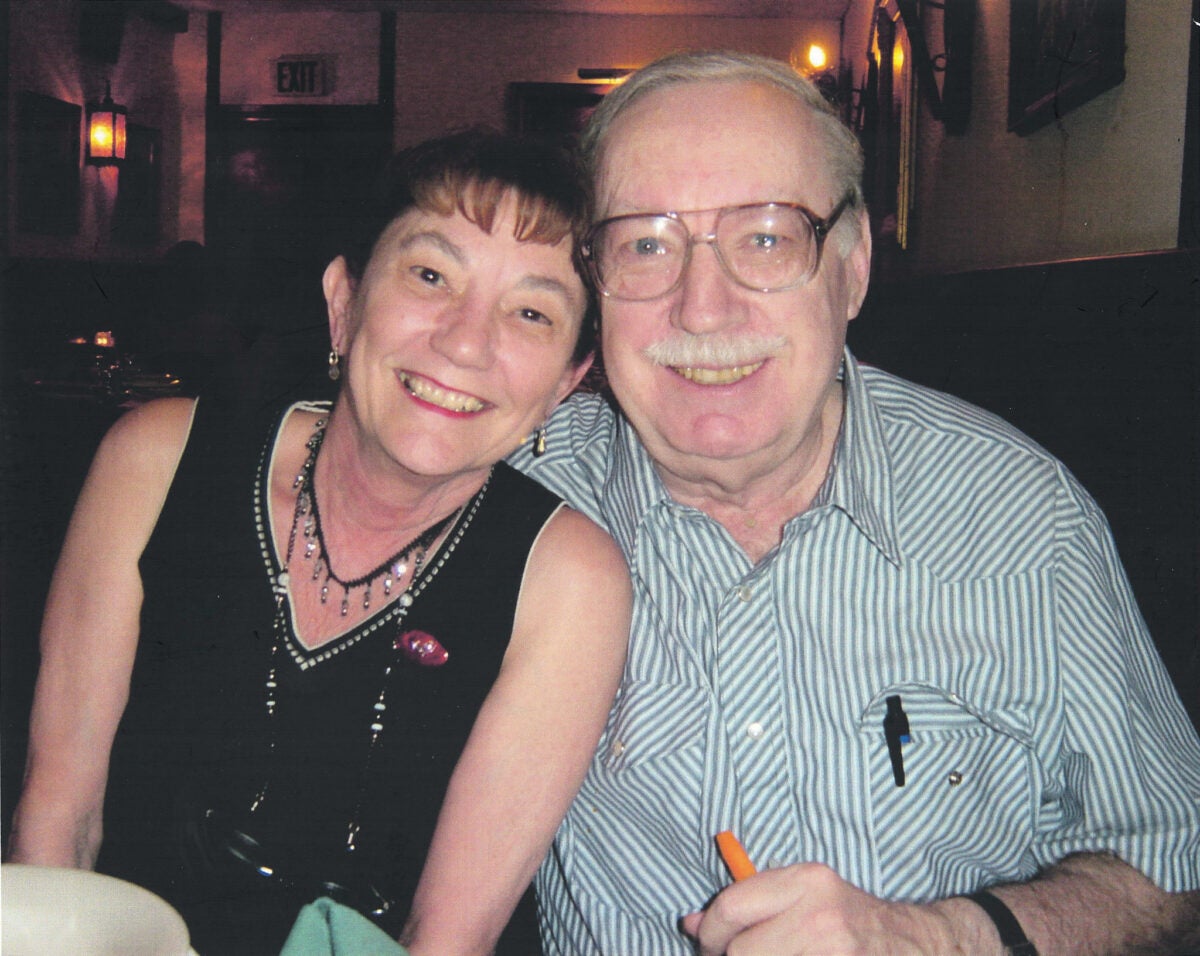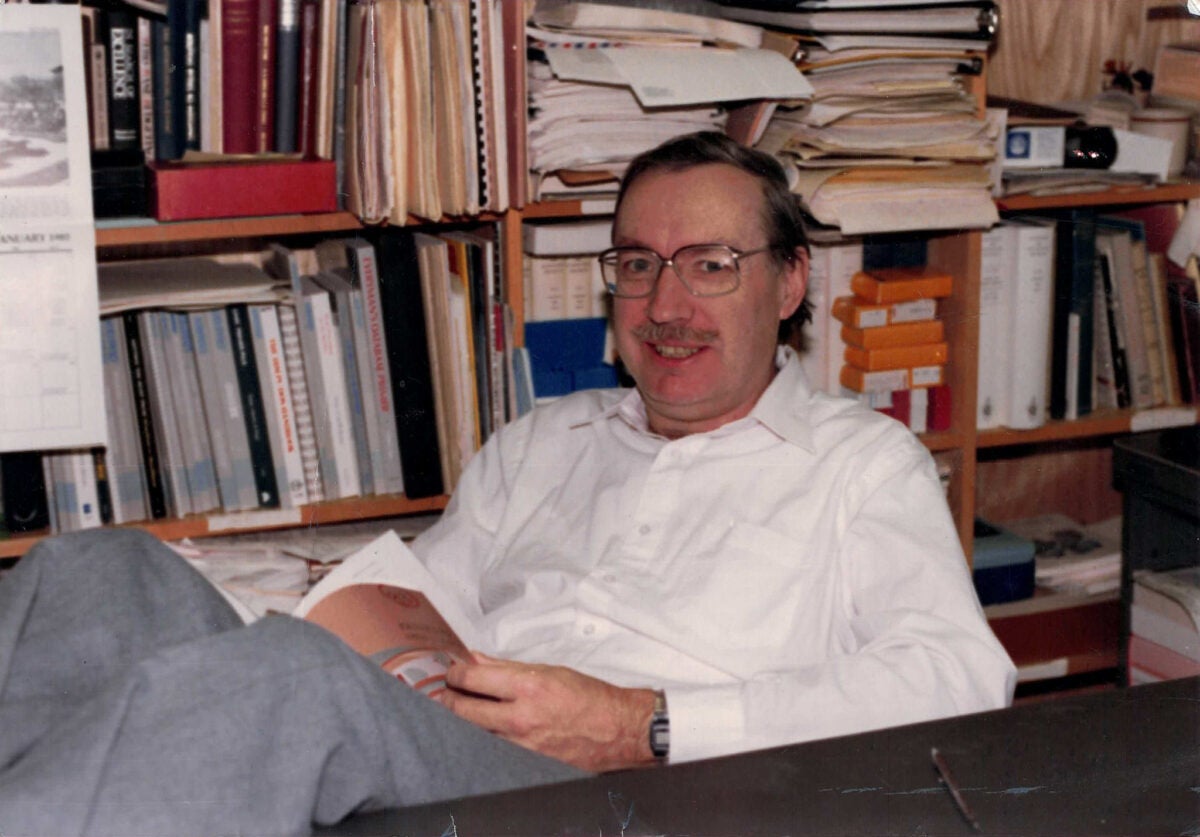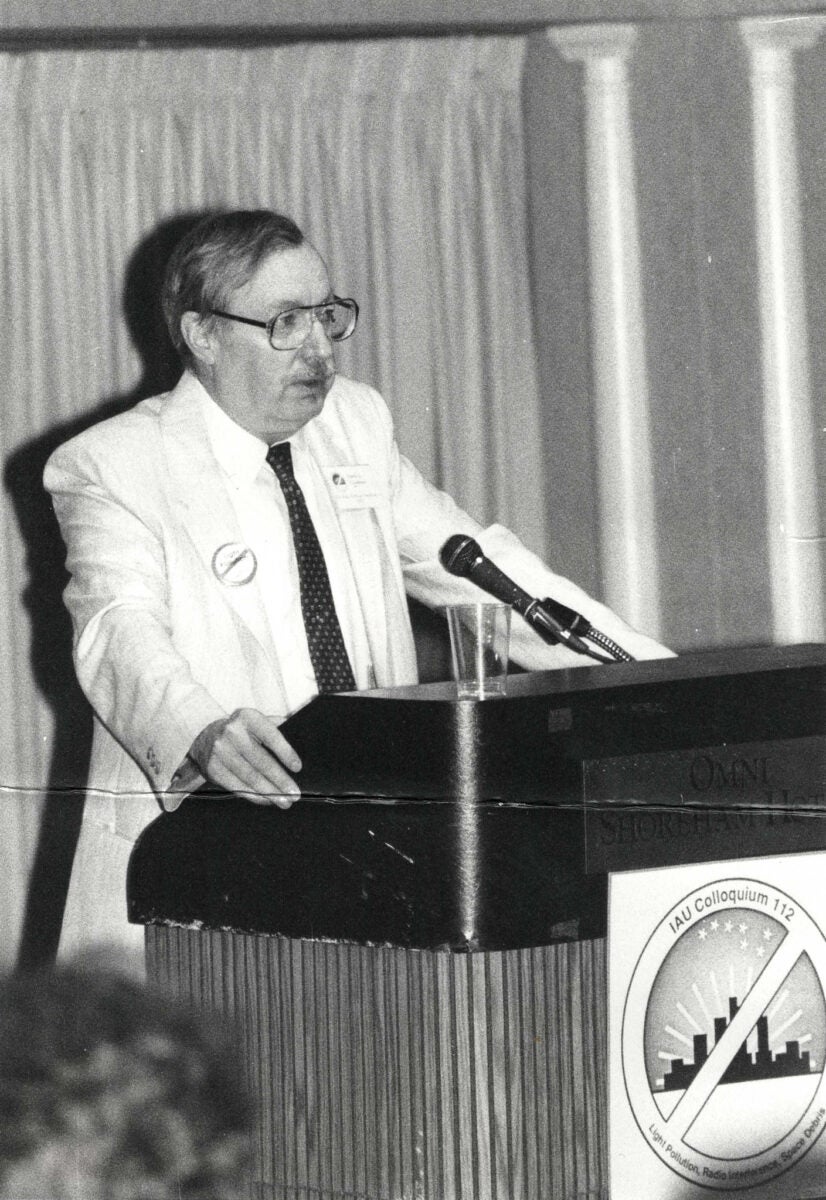
David L. Crawford, an astronomer and one of the pioneers of the modern dark-sky movement, died peacefully July 22 in Carlsbad, California.
During a decadeslong tenure at Kitt Peak National Observatory (KPNO) in Tucson, Arizona, he was renowned for his work in stellar photometry and led the construction of two of the most productive 4-meter telescopes in the world.
But his most impactful legacy may lie not in any individual instrument but as a leader in the fight to preserve dark skies for all. He was a founder of the International Dark-Sky Association (IDA), now known as DarkSky International, and worked to educate local officials and the public on the fragility of the night sky and best lighting practices to conserve it. His tireless efforts and adept coalition-building contributed to municipalities in southern Arizona adopting some of the strongest lighting codes in the world.
Today, the movement that he helped start has gone global. IDA has certified hundreds of dark-sky places around the world in 22 countries, and its work has contributed to a growing awareness of the importance of the night sky as a resource and part of humanity’s shared cultural heritage.
“I personally consider Dave to be one of the greatest environmentalists of the late 20th and early 21st centuries,” IDA co-founder Tim Hunter wrote in a statement released by the organization. “Dave brought the issues of light pollution, light trespass, and quality nighttime lighting to the forefront of public awareness.”
Crawford was also a former chairperson of the American Astronomical Society’s committee on light pollution. “In many respects, Dr. Crawford was the founder of the modern dark-sky movement, and we owe much to his vision and leadership,” the committee said in statement. (The group is now known as the Committee for the Protection of Astronomy and the Space Environment, or COMPASSE.)
From astronomer to advocate
Crawford was born in 1931 in Tarentum, Pennsylvania, and received his Ph.D. from the University of Chicago, serving as a research assistant at the affiliated Yerkes Observatory in Williams Bay, Wisconsin. After a short stint at Vanderbilt University in Nashville, Tennessee, he took up a staff position in 1960 at Kitt Peak, where he would spend the rest of his research career. From 1963 to 1973, he served as construction project manager of the Nicholas U. Mayall Telescope at KPNO and its southern counterpart, the Victor M. Blanco Telescope atop Chile’s Cerro Tololo. The Mayall and Blanco telescopes remain important facilities in the study of dark energy, each performing state-of-the-art surveys of distant galaxies with the Dark Energy Spectroscopic Instrument and the Dark Energy Camera, respectively.

At Kitt Peak, Crawford established himself as a leader in the fight against light pollution by founding KPNO’s Dark Sky Office with his colleague Bill Robinson. Together with other observatories, they convinced local officials in Arizona and Mexico to move toward low-pressure sodium lighting, which emits at wavelengths that could be easily filtered by professional facilities. “We don’t want to see southern Arizona go the way of southern California, where we’re losing the maximum usefulness of several major observatories because of unrestricted growth in outdoor night lighting,” Crawford told Astronomy in the July 1982 issue.
His work took on another dimension a few years later when he was approached by amateur astronomer Tim Hunter. In Hunter’s telling, the skies above his personal observatory in Tucson had recently been filled with wayward light from the nearby University Medical Center. As it turned out, the center had installed the low-pressure sodium lighting recommended by professional astronomers like Crawford — but without shielding, significantly reducing the sky quality for amateur astronomers. After several meetings with Crawford and Robinson, Hunter said, “What initially began as a contentious discussion gradually evolved into a friendship and a shared commitment to protecting the night sky.”
Crawford and Hunter founded IDA in 1988. In August of that year, Astronomy noted that the new organization was not taking “an ‘antilight’ tactic in the battle against light pollution” — rather, it intended “to promote the use of ‘good light,’” including fixtures with proper shielding.
“For many years, IDA’s headquarters was his house, with boxes of papers, notebooks, computers, light fixtures, slides, pamphlets, and books spread throughout his living room, home office, and work office at the [KPNO] headquarters in Tucson,” said Hunter.

Crawford was also a member of the Illuminating Engineering Society, the organization for lighting professionals. “He wanted to learn about lighting and work with professionals who designed and installed lighting,” said Hunter. “His goal was to make friends, not enemies.”
In August 1988, Crawford organized a colloquium in Washington, D.C., hosted by the International Astronomical Union. In November of that year, Astronomy reported:
According to [Crawford], this was the first meeting to bring together astronomers from around the world with lighting engineers, lawyers, and government officials concerned with the dangers to astronomy. Unless these problems are solved, said Crawford in his opening address to the colloquium, “observational astronomy will end.”
36 years later, the meeting’s topics seem eerily prescient. In addition to ground-based light pollution, astronomers expressed concern about interference from satellites — both in radio astronomy and as streaks on images — as well as the growing threat of space debris to telescopes in orbit.

Crawford served as IDA’s executive director for approximately 20 years. During those years, the pages of Astronomy often featured reports on his work, as well as notices of meetings and colloquia where he spoke on the topic, converting untold numbers of audience members to his cause. (His recruits included Sky and Telescope Senior Editor Kelly Beatty, who served on IDA’s board for many years and penned a tribute to Crawford that can be found here.)
An inspiration across generations
When Astronomy reported on the IDA’s founding in our August 1988 issue, Hunter said, “if you could only convince manufacturers to make only proper, shielded lights, a lot of the problem would be solved in a generation.” Just eight years later, in September 1995, Astronomy reported progress on this front:
Because of the education efforts of Crawford and IDA, lighting manufacturers are producing better light fixtures and, perhaps more importantly, are making these fixtures available to cities, towns, and counties across the nation. Recently, Hubbell Lighting, Inc., came out with a kit to retrofit the classic 175-watt “cobra” head fixture. It has been estimated that more than 10 million of these lights hang from poles, houses, barns, and sheds throughout the country. For the one-time cost of about $45, the light can be refitted with a shield that turns the dreaded fixture into a full-cutoff fixture and a 70-watt lamp. Because the light is directed down, the same amount of light still reaches the ground, while the lamp’s owner reaps multiyear savings without losing any effectiveness.
Over the last decade, the impact of such fixtures on the night sky has taken a turn for the worse, especially as municipalities and businesses have moved swiftly to install LEDs. The technology brings further energy savings, but the overuse of unshielded, broadband LEDs has introduced a new round of threats to astronomy, cultural heritage, wildlife, and human health, as Christopher Cokinos detailed in our July 2024 issue.
Related: How to win the fight against light pollution
On top of that, the spaceborne hazards to astronomy identified 36 years ago by Crawford and his colleagues have only been amplified by megaconstellations like SpaceX’s Starlink.
These multiplying threats make the work that Crawford started even more critical — and it will be up to our generation to finish it. While the fight against light pollution goes on, Crawford’s legacy of forging coalitions between astronomers, environmentalists, engineers, and policymakers will remain a blueprint for many years to come.









